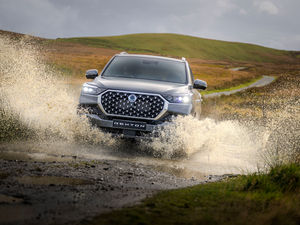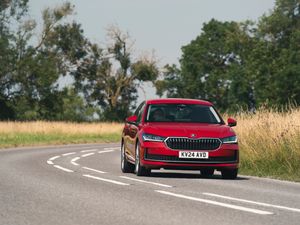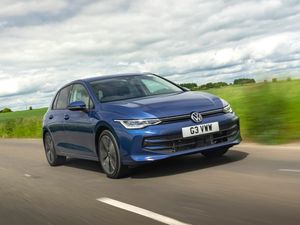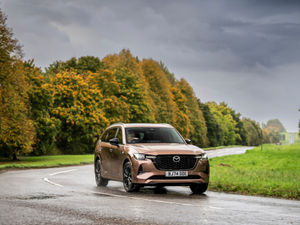First Drive: Toyota has completed its set of commercial vehicles with its Proace Max
With a wide range of body styles, as well as diesel and electric versions, the consumer shouldn’t be left without choice. Cameron Richards finds out.
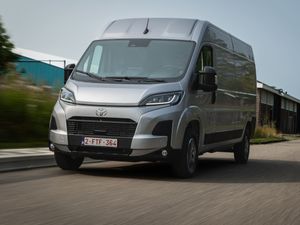
What is it?

It may look familiar and that’s because you’d be right – the Toyota Proace Max is near-identical to the Fiat Ducato, Citroen Relay, Peugeot Boxer and Vauxhall Movano.
All of them share the same bodies, platform, chassis and electrics, with the only differences being the badges and some exterior styling differences.
The Proace Max completes Toyota’s very extensive line-up of commercial vehicles, and with piston and battery-electric power on offer, it should attract plenty of buyers. Let’s find out what it’s like.
What’s new?

The Proace nameplate has been around for over a decade, and since 2016, Toyota has been in partnership with the Stellantis Group in building its vans.
The Max is the biggest sibling in the Toyota Proace family, sitting alongside the smaller City and Verso models. Not only that, but a wide selection of different body styles and powertrains are available to suit all. A vast array of standard safety features including crosswind assist are also fitted as standard, which helps keep the van stable when driving through strong crosswinds.
What’s under the bonnet?

Here on our shores, there will be a choice of diesel and electric versions. We are driving the predicted best-seller which is the 2.2-litre turbocharged diesel producing 138bhp and 350Nm of torque. There is a choice of either six-speed manual or eight-speed automatic transmissions available, too.
You can also specify the Max with an electric powertrain which brings a 110kWh lithium-ion battery pack with an electric motor which Toyota claims can do up to 261 miles on a single charge. The electric motor, meanwhile, produces 268bhp and 410Nm of torque and it’s compatible with 150kW DC rapid charging enabling the van to be topped up from zero to 80 per cent in 55 minutes.
What’s it like to drive?
The cliche of ‘it drives like a van’ can be made here because that’s exactly how it feels. The Proace Max does exactly what it says on the tin and that’s great because it’s not pretending to be like a car.
To drive, you sit high up which gives you a commanding view of the road ahead and the door mirrors are very large with small blind spot detection lights which really helps when changing lanes on a motorway.
We’re driving the 2.2-litre turbocharged diesel with the six-speed manual. The engine is noisy and rough, but it has plenty of torque and is punchy and actually rather fun to whisk along. The gearbox is slick and precise and the clutch is nice and light.
Where the van falls down is in its refinement. With it being a tall vehicle you get a lot of wind and road noise – particularly around the door mirrors.
The EV version of the van is a lot quieter – as to be expected. It’s easier to drive due to the automatic gearbox and acceleration is pretty good, too. However, as the electric variant weighs an extra 750kg, you can feel it when you drive it – particularly when it comes to stopping.
How does it look?

Our test van is the length three (L3) by height two (H2) bodystyle and from almost every angle you could mistake it for one of its Stellantis’ twins, with the exception of the badging and the front grille.
Apart from those minor changes it’s all standard van territory with a very tall and boxy shape with vertically positioned rear tail lights. Like with its driving experience, the design is simple and easily recognisable as a van and that really isn’t a bad thing. The Stellantis group vans that the Max shares almost every compartment with have been around for over a decade and in that time their designs have aged exceptionally well.
What’s it like inside?

It will be of no surprise that the Proace Max shares almost all of its switchgear and dashboard layout with the rest of the Stellantis vans, but the design itself is simple and easy to navigate with physical shortcut buttons as well. The standard 10-inch touchscreen adds a little bit more of a modern touch and all the materials, although hard and cheap feeling, do look as though they will stand up to the test of time.
The only niggle that was found was depending on how tall you are and where you have the steering wheel positioned, it could obstruct the dials when driving – which is annoying.
What’s the spec like?

Toyota has decided to keep it simple yet generous for us British buyers. In fact, there is only one trim level you can choose and that is Icon.
Although there is just the one trim across the entirety of the range, there is a vast amount of different body styles including a Chassis Cab, Platform Cab, Tipper and a total of three different lengths named as L2, L3 and L4 and two different heights as H2 and H3.
The range kicks off at £34,715 ex VAT for the 2.2-litre diesel with the Chassis Cab bodystyle. Standard equipment is generous with all vans coming with a 10-inch multimedia touchscreen, a seven-inch digital instrument cluster, wireless Apple CarPlay and Android Auto, traffic sign recognition and DAB radio.
Equipment across the range remains the same with prices rising up to £53,613 ex VAT for the L4 by H3 electric version.
Verdict
Toyota’s contribution to the commercial vehicle market has grown rapidly in recent years and the Max is the final piece in the firm’s Proace jigsaw puzzle. It may not revolutionise the way we look at vans, but its simplicity and a good mix of bodystyles and drivetrains give the business buyer a lot of choice. And, with one very well equipped trim level, the Proace Max certainly has value for money on its side, too.


